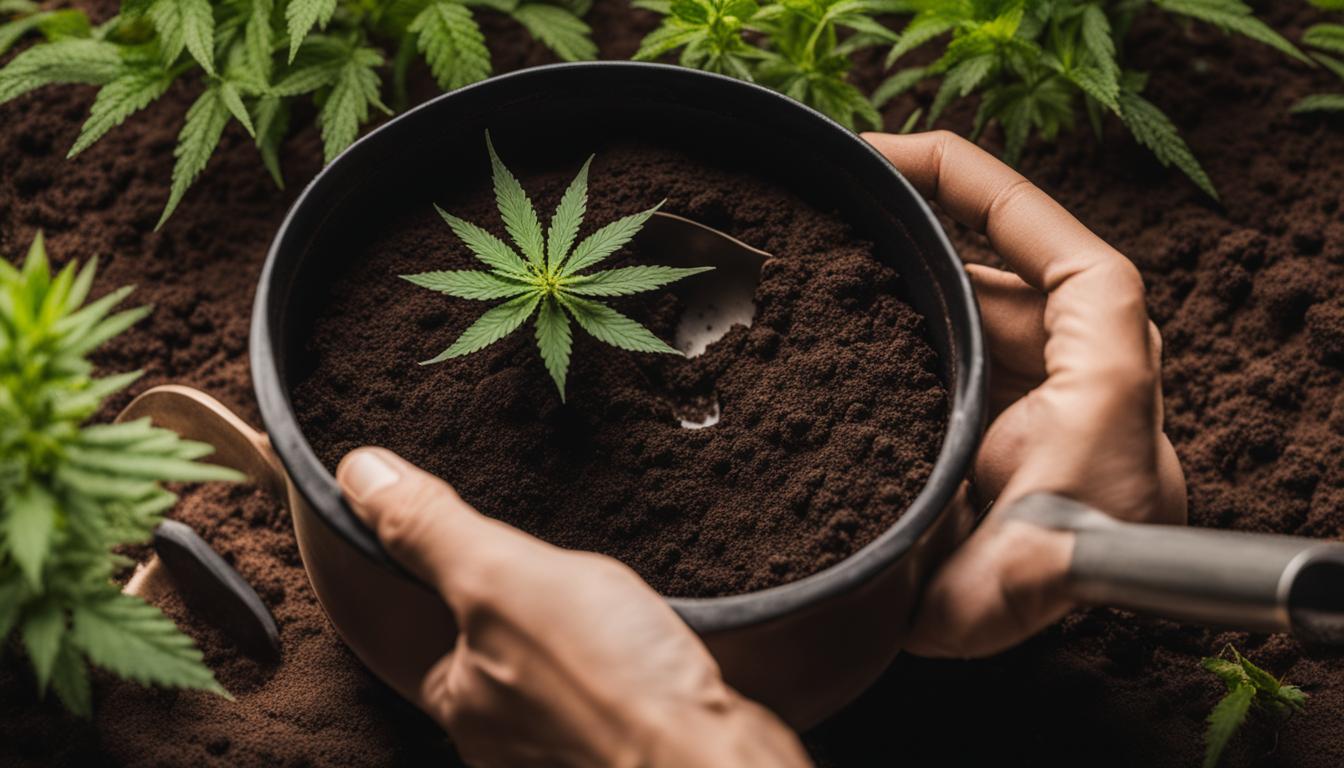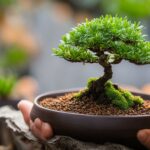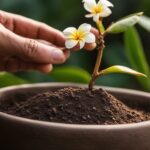Are you ready to embark on your cannabis growing journey? Learning how to plant cannabis seeds is the first step towards cultivating your own high-quality buds. In this comprehensive guide, we will provide you with step-by-step instructions and best practices for successful seed planting. Whether you’re a beginner or an experienced grower, these cannabis seed planting tips and techniques will help you achieve optimal germination and healthy plant development.
Starting seeds can be an exciting and rewarding process. With the right knowledge and techniques, you can ensure successful germination and grow your own cannabis plants from seed to harvest. From choosing high-quality seeds to providing the ideal growing conditions, we will cover everything you need to know.
So, grab your gardening gloves and let’s dive into the world of cannabis seed planting!
Choosing High-Quality Cannabis Seeds
When it comes to planting cannabis seeds, selecting high-quality seeds is crucial for a successful and bountiful harvest. But what exactly does “high-quality” mean? Let’s explore the key factors to consider when choosing cannabis seeds.
Seed Selection: Look for reputable seed banks and breeders that offer a wide variety of strains. Consider factors such as seed quality, genetics, and desired effects. Whether you prefer the relaxing indica or the energizing sativa, understanding the different strains and their characteristics is essential for making an informed decision.
Feminized Seeds: Feminized seeds have gained popularity among cannabis growers as they have a higher chance of producing female plants. Since female plants are the ones that yield buds, feminized seeds offer a greater chance of a successful harvest. However, keep in mind that feminized seeds may come at a slightly higher price point.
Indica vs Sativa: Indica and sativa are two different species of the cannabis plant, each with its own unique effects and characteristics. Indica strains are known for their relaxing and sedating properties, making them ideal for nighttime use. Sativa strains, on the other hand, are known for their uplifting and energizing effects, making them suitable for daytime use. Consider your desired effects when selecting the right strain for your needs.
By taking the time to research and select high-quality cannabis seeds, you can lay the foundation for a successful and rewarding growing experience.
The Benefits of Feminized Seeds:
Feminized seeds have become incredibly popular among cannabis growers for several reasons:
- Higher chances of producing female plants.
- Increased yield potential as only female plants produce buds.
- Eliminates the need to identify and remove male plants.
- Allows for more efficient use of space and resources.
Whether you’re a beginner or an experienced grower, feminized seeds can simplify the cultivation process and maximize your chances of a successful harvest.
| Seed Selection Factors | Indica Seeds | Sativa Seeds |
|---|---|---|
| Effects | Relaxing, sedating | Uplifting, energizing |
| Growth Characteristics | Shorter, bushier plants | Taller, lankier plants |
| Flowering Time | Shorter (around 8-9 weeks) | Longer (around 10-12 weeks) |
| THC Levels | Generally higher | Varies |
Choosing high-quality seeds is the first step towards a successful cannabis growing journey. Take the time to research different strains, consider the desired effects, and explore the benefits of feminized seeds. By selecting the right seeds, you can set yourself up for a flourishing cannabis garden with abundant yields.
Final Thoughts
Remember, the quality of your cannabis seeds can significantly impact your overall growing experience. Invest in high-quality seeds from reputable sources, consider your strain preferences, and explore the benefits of feminized seeds. With the right seeds in hand, you’ll be one step closer to enjoying the rewards of homegrown cannabis.
Germination Techniques for Cannabis Seeds
Germination is a critical step in the process of growing cannabis plants from seeds. There are several popular techniques that can be used to successfully germinate cannabis seeds. Each method has its own advantages and considerations, so it’s important to choose the one that best suits your preferences and available resources.
The Paper Towel Method
This method involves placing the cannabis seeds between damp paper towels or cotton pads. The moisture helps to activate the seeds and promote germination. Place the seeds between the damp materials and keep them in a warm and dark location. Check the seeds regularly to ensure they remain moist and wait for the taproot to emerge before transferring them to a growing medium.
The Water Soaking Method
In this method, the cannabis seeds are soaked in a container of water. This technique mimics the natural process of seeds being soaked in rainwater before germination. Place the seeds in a glass of water and keep them in a warm and dark environment. After a few days, you should see the seeds start to sink and cracks forming in the outer shell. Once this occurs, transfer the seeds to a growing medium.
Direct Planting
Direct planting is the simplest method and involves placing the cannabis seeds directly into the growing medium, such as soil or coco coir. Ensure that the growing medium is moist and warm, as this will help to promote germination. Cover the seeds with a thin layer of growing medium and keep them in a warm and dark environment until the seedlings emerge.
Jiffy Pots and Germination Stations
Jiffy Pots and germination stations are pre-made systems that provide an ideal environment for germinating cannabis seeds. Jiffy Pots are biodegradable pots that can be filled with a growing medium and used to germinate seeds. Germination stations are enclosed systems that provide controlled temperature, humidity, and light conditions for germination. These methods offer convenience and consistent results.
Remember to monitor the germination process closely and provide the necessary conditions for successful seed sprouting. Choose the germination technique that works best for you and enjoy the excitement of seeing your cannabis seeds come to life.
Germination Tips for Successful Seed Sprouting
Proper germination is essential for the successful sprouting of cannabis seeds. Here are some essential tips to ensure optimal seed sprouting:
Germination Temperature
Maintaining the right temperature is crucial for seed sprouting. The optimal germination temperature for cannabis seeds is between 70°F and 90°F (21°C and 32°C). Keeping the temperature within this range provides the ideal conditions for the seeds to sprout and develop.
Moisture Control
Keeping the growing environment moist but not wet is important for seed sprouting. Overly wet conditions can lead to mold and rot, while insufficient moisture can hinder germination. Ensure that the soil or germination medium is adequately moist without being saturated.
Seed Handling
Minimizing seed handling helps prevent damage to the delicate sprouts. The taproot is delicate and can easily break if mishandled. Handle the sprouts with care, avoiding excessive touching or moving them once they have started to sprout.
pH Value
Monitoring the pH value of the germination medium is crucial for successful seed sprouting. The ideal pH range for cannabis seeds is between 5.8 and 6.3. Maintaining the correct pH level ensures that the seeds can access the necessary nutrients for healthy sprouting.
Light Requirements
While light is not essential during the germination process, providing a low level of fluorescent light can promote healthier growth. Once the seeds have sprouted, ensure they receive adequate light to stimulate photosynthesis and support further development.
By following these germination tips, you can increase the chances of successful seed sprouting and set your cannabis plants up for healthy growth.
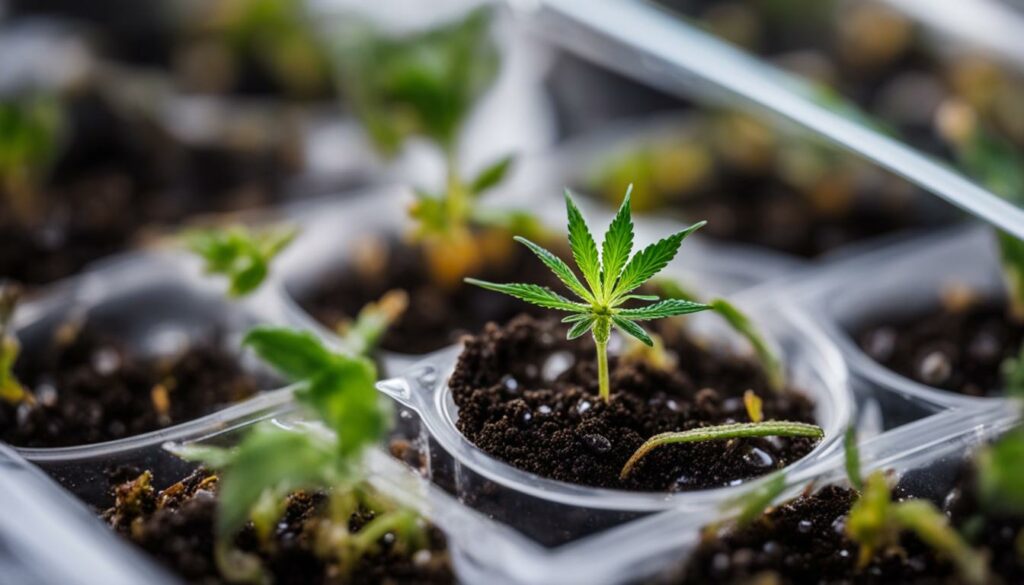
Different Methods for Planting Cannabis Seeds
Once the cannabis seeds have successfully germinated, it’s time to choose a method for planting. There are various options available, each with its own advantages and requirements. Let’s explore some of the popular methods:
Glass of Water Approach
This method involves placing the germinated seeds in a glass of water until they develop a taproot. The seeds are suspended in water, allowing them to absorb moisture and sprout. Once the taproot emerges, they can be carefully transferred to a growing medium.
Wet Kitchen Towel Method
In this method, the germinated seeds are placed on a wet kitchen towel or paper towel. The towel is then folded over the seeds to keep them moist. This creates a warm and humid environment, promoting rapid root development. Once the taproot emerges, the seeds can be planted.
Planting Directly into Soil
For those who prefer a straightforward approach, planting the germinated seeds directly into soil is an option. Prepare a hole in the soil and gently place the seed with the taproot facing downwards. Cover it with a thin layer of soil and water lightly. This method allows the seed to establish a strong root system in its final growing medium from the beginning.
Using Stone Wool Blocks
Stone wool blocks provide an efficient and versatile method for planting cannabis seeds. These blocks retain moisture well and offer good airflow to the developing roots. Simply create a hole in the block, place the germinated seed, and lightly cover it with the surrounding stone wool. As the seedling grows, it can be transplanted into a larger container or the desired growing medium.
RQS Soil Plugs
RQS soil plugs are pre-packaged soil pellets that provide a convenient and consistent planting method. These plugs are made from high-quality soil and can be easily rehydrated. Simply place the germinated seed into the center of the plug, ensuring the taproot is facing downwards. The plug can then be placed in a container or directly into the growing medium. This method ensures a favorable environment for root development.
Remember, the choice of planting method depends on your preferences and the resources available to you. Consider factors such as convenience, desired root growth, and the specific characteristics of each method. Experimenting with different techniques can help you find the best approach for successful cannabis seed planting.

Proper Care for Germinated Seeds
After planting the germinated seeds, it is crucial to provide proper care to ensure their healthy growth. There are several key factors to consider, including moisture control, watering schedule, temperature maintenance, light requirements, and avoiding seed damage.
Moisture Control
One of the most important aspects of caring for germinated seeds is maintaining proper moisture levels. It is essential to keep the soil consistently moist without overwatering. Overwatering can lead to root rot and other issues that can harm the seedlings. Regularly check the moisture levels by inserting your finger into the soil to ensure it is damp but not soaking wet. Adjust the watering schedule accordingly to maintain the right moisture balance.
Watering Schedule
Establishing a proper watering schedule is crucial for the healthy growth of germinated seeds. While it is important to keep the soil moist, it is equally important to avoid excessive watering. Overwatering can drown the roots and lead to nutrient deficiencies and root rot. Generally, it is best to water the seedlings when the top layer of soil feels dry to the touch. Use a gentle watering technique to avoid disturbing the delicate roots.
Temperature Maintenance
Proper temperature maintenance is essential for the success of germinated seeds. Most cannabis strains thrive in temperatures between 70°F and 85°F. It is important to provide a stable and consistent temperature in the growing environment. Avoid exposing the seedlings to extreme temperature fluctuations as it can stress the plants and hinder their growth. Use a thermometer to monitor the temperature and make adjustments as needed to maintain the ideal range.
Light Requirements
Light plays a crucial role in the growth and development of germinated seeds. Ensure that the seedlings receive adequate light to promote healthy growth. If using artificial lighting, position the lights approximately 12-18 inches above the seedlings and provide them with 18-24 hours of light per day. If growing outdoors, choose a location that receives direct sunlight for at least 6-8 hours a day. Monitor the seedlings to ensure they are receiving the appropriate amount of light for optimal growth.
Avoiding Seed Damage
When caring for germinated seeds, it is important to handle them with care to avoid causing damage. Avoid touching the delicate roots as they are susceptible to breakage. When transplanting or handling the seedlings, hold them by the leaves or use a gentle tool to minimize direct contact with the roots. Additionally, avoid using excessive force when watering or manipulating the seedlings to prevent damage to their fragile structure.
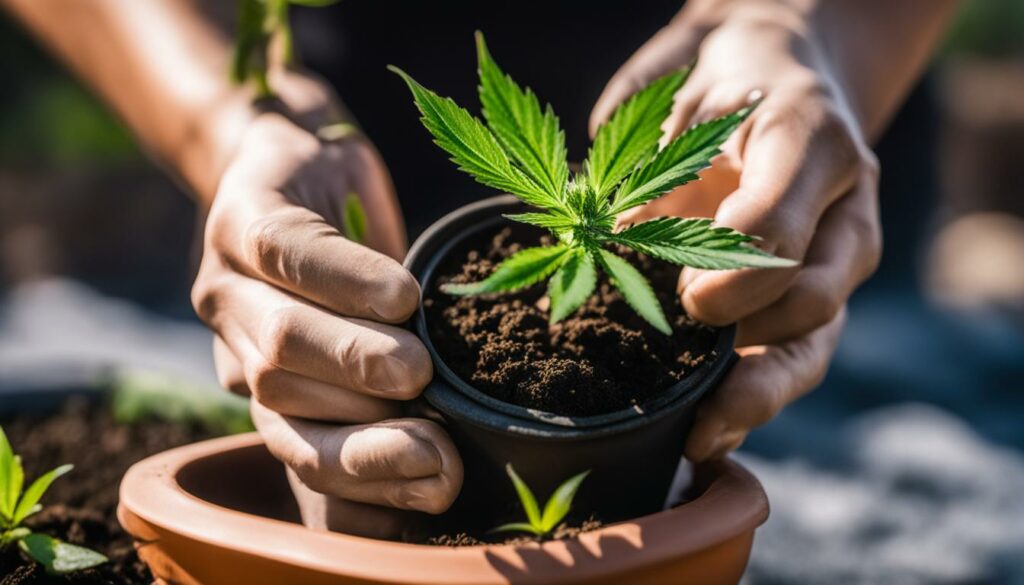
| Moisture Control | Watering Schedule | Temperature Maintenance | Light Requirements | Avoiding Seed Damage |
|---|---|---|---|---|
| Consistently moist soil | Water when soil feels dry | Maintain temperature between 70°F and 85°F | Provide adequate light | Handle with care to avoid damage |
| Avoid overwatering | Use a gentle watering technique | Avoid temperature fluctuations | Position lights appropriately | Avoid touching roots |
Transplanting Seedlings for Continued Growth
Once your cannabis seedlings have grown and developed a strong root system, it’s time to transplant them into their permanent pots. Transplanting seedlings is a crucial step in ensuring their continued growth and success. Here are some tips and techniques to help you with the transplanting process:
Choosing the Right Potting Soil
The first step in transplanting seedlings is to choose the right potting soil. Look for a high-quality soil mix that is loose, well-draining, and nutrient-rich. Avoid heavy soils that can retain too much moisture and lead to root rot. A premium potting mix specifically formulated for cannabis plants is your best bet.
Using a Root Stimulator
When transplanting your seedlings, consider using a root stimulator to promote healthy root development. A root stimulator is a product that contains beneficial microorganisms and nutrients that help stimulate root growth. Simply follow the product instructions and apply the root stimulator to the root zone of your seedlings before transplanting them into their new pots.
Maintaining Proper Soil Moisture and Growth Environment
After transplanting, it’s important to maintain proper soil moisture to prevent over or under-watering. Water the seedlings thoroughly but avoid saturating the soil. Allow the top inch of the soil to dry out slightly before watering again. Additionally, make sure to provide the seedlings with the appropriate growth environment, including the right temperature, humidity, and lighting conditions. This will help the seedlings adjust to their new pots and continue to grow vigorously.
Table: Transplanting Seedlings Tips
| Tip | Description |
|---|---|
| Choose the right potting soil | Use a loose, well-draining, and nutrient-rich soil mix specifically formulated for cannabis plants. |
| Consider using a root stimulator | Apply a root stimulator to promote healthy root development before transplanting. |
| Maintain proper soil moisture | Water the seedlings thoroughly but avoid over-saturating the soil. |
| Provide a suitable growth environment | Ensure the seedlings have the right temperature, humidity, and lighting conditions for optimal growth. |
Transplanting seedlings requires careful attention to detail and proper care to ensure their continued growth and development. By following these tips and techniques, you can help your seedlings thrive and prepare them for a bountiful harvest in the future.

Conclusion
Planting cannabis seeds is an exciting and rewarding journey that allows you to grow your own cannabis plants and enjoy the fruits of your labor. By following this step-by-step guide and implementing the best practices for cannabis seed planting, you can ensure successful germination and healthy plant development.
Remember to start by choosing high-quality seeds from reputable seed banks or breeders. Take into consideration factors such as seed quality, genetics, and desired effects. Whether you prefer feminized seeds or have a specific strain in mind, selecting the right seeds is crucial for a successful growing experience.
Next, explore different germination techniques such as the paper towel method, water soaking method, or direct planting. Each method has its pros and cons, so choose the one that suits your preferences and available resources. Pay attention to factors like temperature, moisture, and light requirements to ensure optimal conditions for germination.
Proper care and attention
Once your seeds have successfully germinated and sprouted, it’s time to provide proper care to ensure their healthy growth. Maintain moisture control by following a regular watering schedule and avoiding overwatering. Keep an eye on temperature maintenance and provide adequate light to promote growth.
Lastly, as your seedlings grow, they will need to be transplanted into suitable potting soil. Use a root stimulator to support healthy root development and maintain proper soil moisture. Continue to provide a suitable growth environment with the right temperature and lighting conditions.
With patience, dedication, and the knowledge gained from this guide, you can embark on a successful journey of growing your own cannabis plants from seeds. Remember to always stay informed about local laws and regulations and enjoy the process of nurturing your plants from seed to harvest.
FAQ
How do I choose high-quality cannabis seeds?
Look for reputable seed banks and breeders that offer a wide variety of strains. Consider factors such as seed quality, genetics, and desired effects (indica vs sativa). Feminized seeds can be a good choice as they have a higher chance of producing female plants and therefore, more bud. Take your time to research and select the right seeds for your desired outcome.
What are some popular techniques for germinating cannabis seeds?
There are several popular techniques for germinating cannabis seeds, including the paper towel method, water soaking method, direct planting, Jiffy Pots, and germination stations. Each method has its pros and cons, so choose the one that suits your preferences and resources. Make sure to provide adequate warmth, moisture, and air for successful germination.
What factors should I consider for successful seed sprouting during germination?
Maintaining the optimal germination temperature between 70°F and 90°F is crucial. Ensure that the growing environment is moist but not wet and has a relative humidity range of 70% to 90%. Minimize seed handling to prevent damage and avoid fluctuations in pH value. Seeds favor fluorescent lighting for growth, so provide adequate light during the germination process.
What are some different methods for planting cannabis seeds?
There are various options, including the glass of water approach, the wet kitchen towel method, planting directly into soil, using stone wool blocks, and RQS soil plugs. Each method offers its unique benefits and requirements. Decide on the best method based on your preferences and the resources available to you.
How do I provide proper care for germinated seeds?
Maintain moisture levels by following a regular watering schedule, keeping the soil moist but not saturated. Maintain a suitable temperature range according to the germination guidelines. Provide adequate light to promote growth, and ensure the seeds are not damaged during the process.
When should I transplant seedlings for continued growth?
Once the seedlings start to grow, they will eventually need to be transplanted for continued growth. Choose a suitable potting soil and make holes for the seedlings to be placed into. Consider using a root stimulator to promote healthy root development. Ensure the soil maintains appropriate moisture levels and provide a suitable growth environment with proper temperature and lighting conditions.

